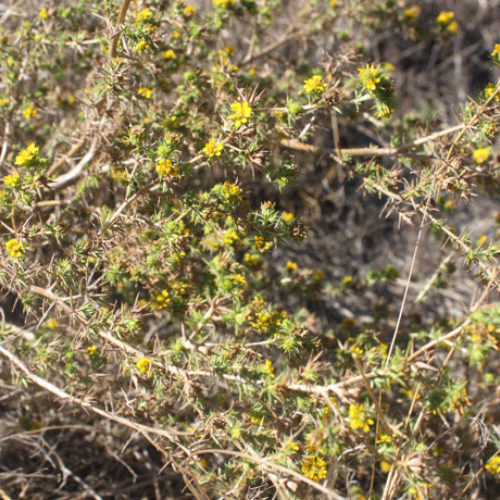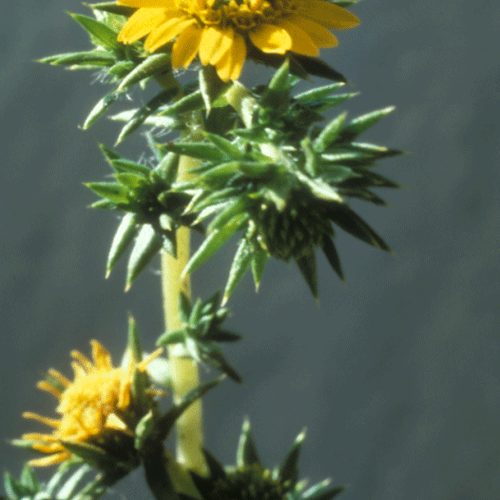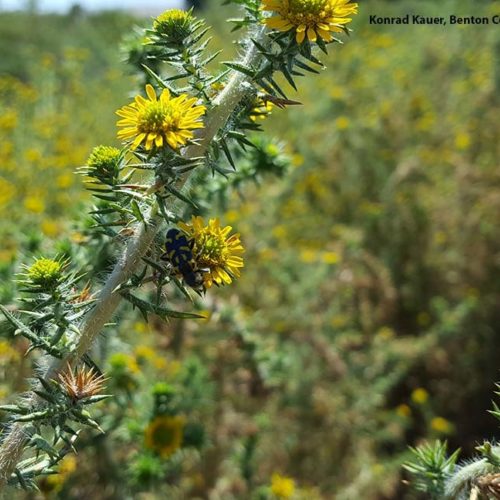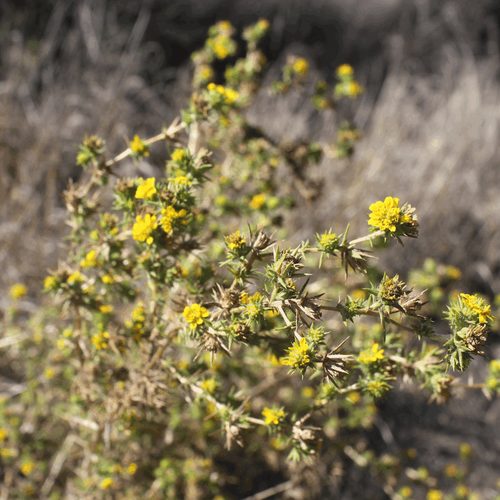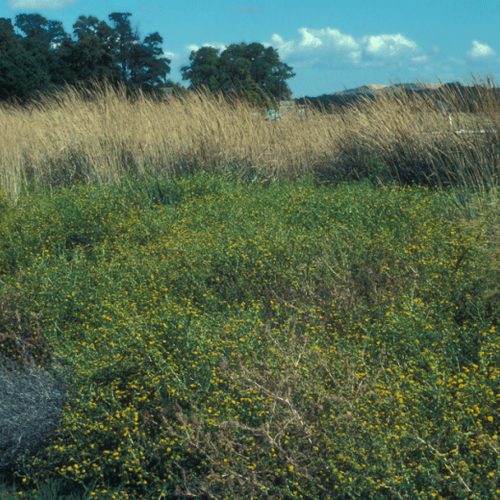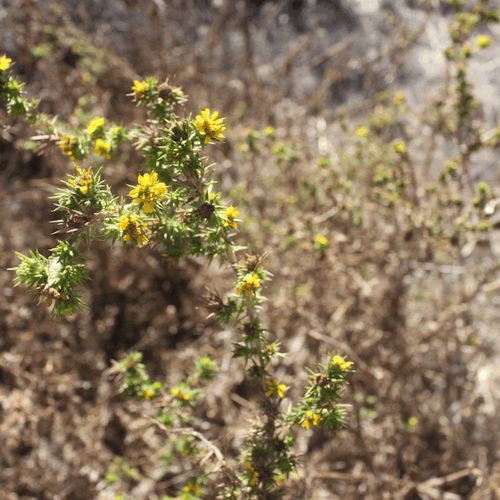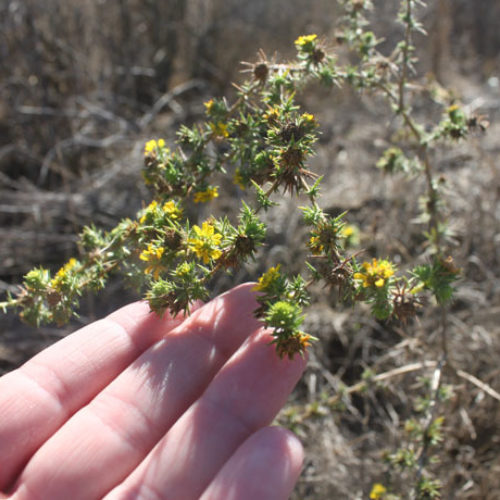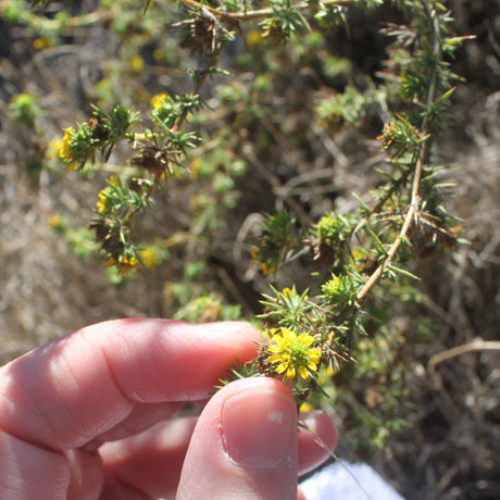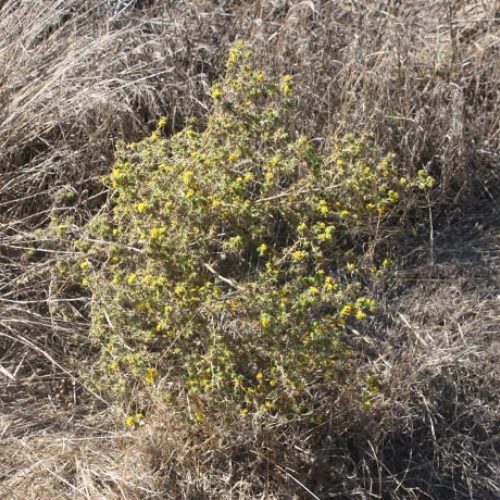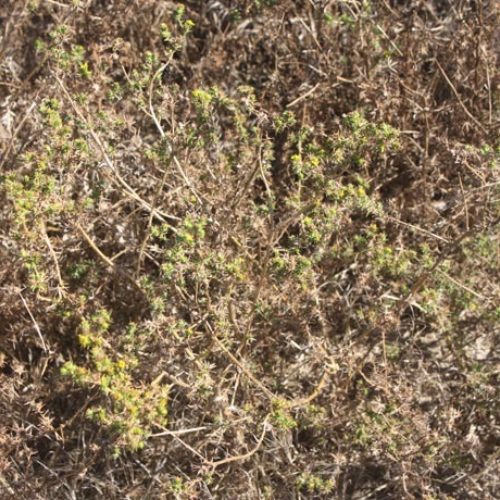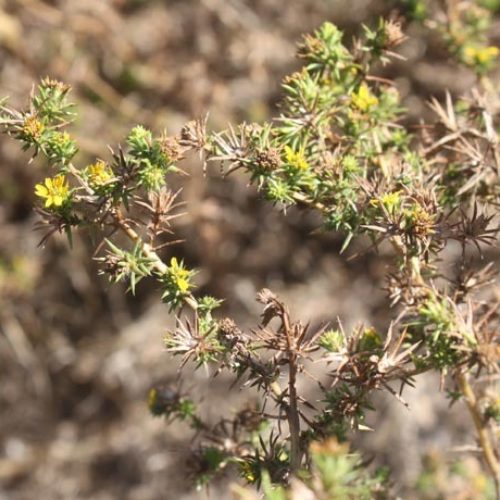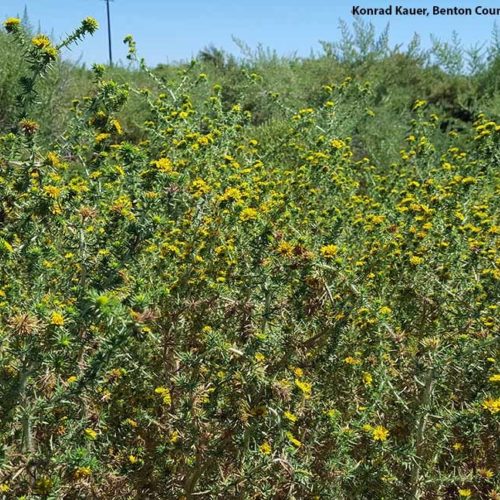Spikeweed
Centromadia pungens
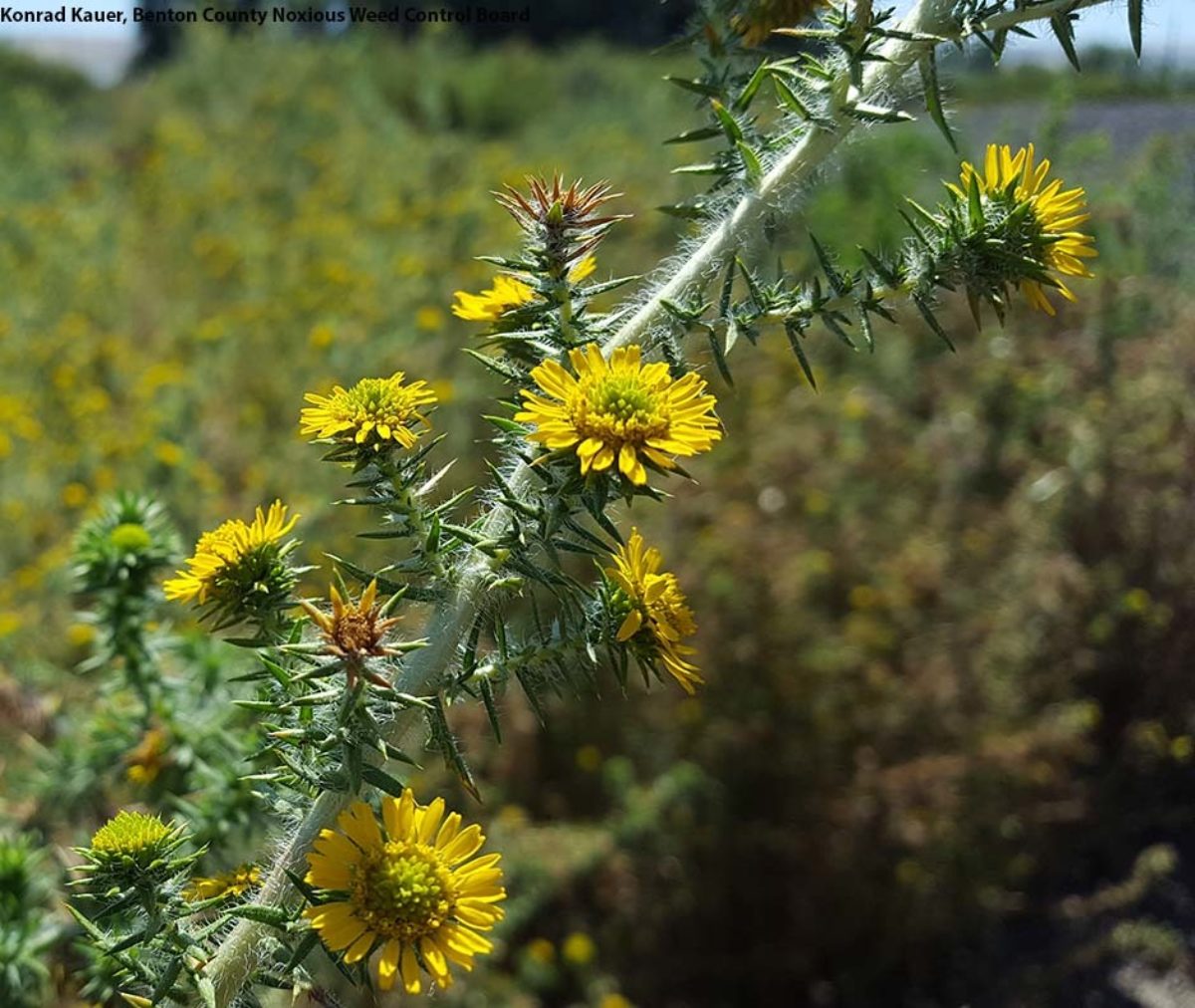
Family: Asteraceae
Other Common Names: common tarweed, maritime spikeweed
Weed class: C
Year Listed: 1989
Native to: Parts of California
Is this Weed Toxic?:
not known to be
Why Is It a Noxious Weed?
Spikeweed is an agricultural pest in the Columbia Basin (southeastern Washington), forming dense stands. It is also avoided by livestock.
How would I identify it?
General Description
Spikeweed is an annual that grows 3.9 inches to 47.2 inches (10 to 120 centimeters) tall. It has rigid branches and leaves with spreading to stiff hairs. Leaves and flowerhead bracts are spine-tipped.
Flower Description
Numerous small flower heads of yellow ray and disk flowers. Bracts at the base of the flower head (the involucre) partially covered by upper leaves. Bracts are spine-tipped and have short stiff hairs.
Leaf description
Lower leaves are divided into narrow, linear lobes or 2 times divided. The upper leaves are linear and spine-tipped. Upper leaves may be bearing axillary leaf bunches. Leaf margins are sometimes hairy and midribs are sometimes bristly.
Stem description
Stems are rigid and freely branching, growing up to 47.2 inches (120 cm.) tall.
Fruit Seed Description
Achenes (seeds) are around 0.08 inches (2 mm) long
Where does it grow?
It grows on roadsides, disturbed areas, open +/- alkaline flats, depressions, seasonal wetlands, grasslands, saltbush scrub and cultivated fields. Please click here to see a county level distribution map of spikeweed in Washington.
How Does it Reproduce?
Spikeweed is an annual and reproduces from seed.
How Do I Control It?
Mechanical Control
Hand pulling spikeweed may be effective for small populations. Pulling plants in the spring is best while the plant is still relatively soft but gloves should still be worn.
Cultural Control
Sheep grazing may be a way to keep populations in check or potentially eradicate them (unclear if this is possible or not).
Herbicide Control
Please refer to the PNW Weed Management Handbook, or contact your county noxious weed coordinator.



